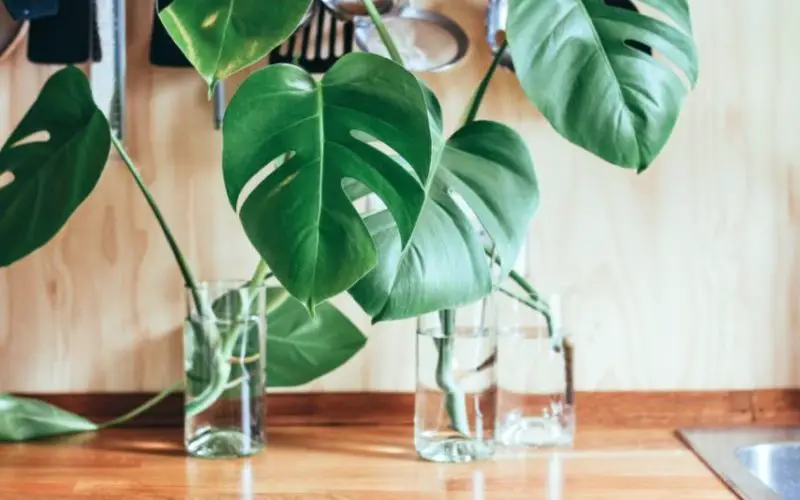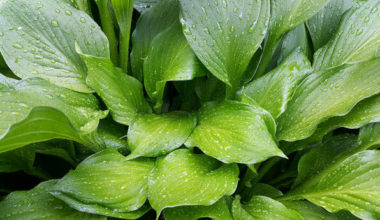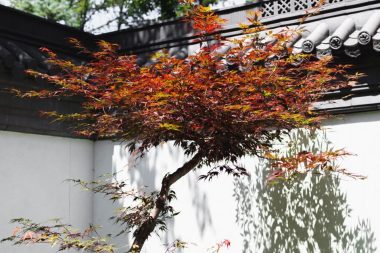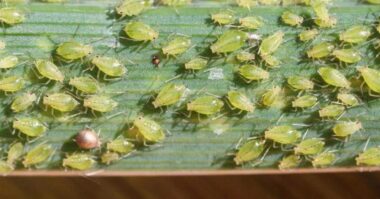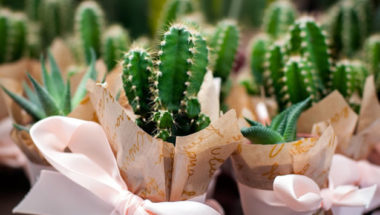This elegant and iconic plant from the Art Deco era has made a comeback and is more popular than ever. Recognized among all other plants by the shape of its leaves, the characteristic holes in them appear as the leaves grow to allow light to pass through and benefit the leaves below.
Learn the basics of Monstera care: light requirements, watering frequency and common problems.
Your Monstera may start to lose its leaves if not properly cared for, but don’t panic, your plant probably won’t stay that way for long.
It is important to know that yes, your Monstera’s leaves will grow back without any worries if you give it the attention it deserves, here is how to do it:
Contents
Why is my Monstera losing its leaves?
When it comes to the leaves of a Monstera, the problem is most of the time the watering, either too much or not enough!
The key indicator is to look at your Monstera’s soil, if it’s wet you’ve probably over watered it, and if it’s dry you guessed it, it’s thirsty.
Make sure you also pay attention to other parameters, such as light, humidity… We explain how to take care of a Monstera the right way just below.
How to take care of a Monstera so that its leaves grow back?
Take care of your Monstera and it will take care of you! Below are some simple tips for continuing to care for your Monstera over time.
Pruning
Throughout the year, remove dry or dead leaves from your Monstera. The main pruning – the one that will make your plant grow – should be done in early spring. To prune your Monstera, use clean, sharp scissors and cut off any excessive stems at the base that interfere with the shape of your Monstera.
Cleaning
Take each leaf between two soft, damp cloths and wipe the top to remove any dust. The healthier leaf will soak up more light. If your Monstera’s leaves are very dirty? soak your cloth with diluted 100% natural and organic black soap. Regular misting will also help keep your plant clean and dust free.
Rotation
Monstera grows towards the light, to keep a harmonious shape, remember to rotate your plant as soon as you observe a lean!
Repotting
Indoor plants grow much slower than in nature. Depending on the size of your plant and the density of the roots, it is a good idea to repot every 2 or 3 years to renew the nutrients in the substrate and encourage new growth.
When to repot?
The Monstera is known for its aerial roots that are visible on the surface of the soil and emerge from the stems like vines.
Your Monstera will show you that it is ready for a larger pot when its larger stems and roots literally start to emerge from the pot.
What size pot?
If you want your plant to grow taller, find a nursery pot 12.5 inches in diameter larger than the current pot. If you want your plant to stay the same height, you can reuse the same pot and simply change the soil.
How to do it?
Spread newspaper on the ground, remove the plant from the planter and carefully remove the roots from the old soil. Line the new planter with a suitable potting soil and place the plant in the center of the pot.
Fill generously with the new potting soil, packing it in well (you can take the opportunity to add some organic fertilizer), the plant must not move! Water your plant well and put it back where it was, with a good indirect light. It will take 2-4 weeks for your plant to stabilize properly and show new signs of growth.
Staking
Some Monstera owners like to stake their plant not only for aesthetic reasons, but also to support the plant and help it grow more vertically. This can be done by inserting a wooden totem pole or bamboo stalks and attaching the plant’s stems to it.
Common problems with Monstera
Yellow, brown or black leaves
If you observe a yellowing or browning of the leaves of your Monstera, it is certainly a problem of over-watering. Combined with a lack of light this can be fatal. Make sure your plant is getting the right ratio of water to light!
Before diagnosing the problem, know that you can remove all yellow or brown leaves by simply cutting them off at the base. Next, check the soil; if it feels wet to the touch (especially at the bottom), let it dry completely before watering again. Overwatering can lead to more serious conditions and this may eventually require you to change the substrate.
No holes in the leaves
Do you have a Monstera with no holes in the leaves? No problem! The absence of holes or cracks on Monstera leaves is not always a sign of distress. If your plant is young, be aware that sometimes it’s not until the plant has unfurled six or seven leaves that the cracks begin to appear.
It could also be that your plant is not getting enough light. If you think this is the case, move it to an area with more indirect light and wait!
Leaves are curling up
If your Monstera’s leaves are curling up, your plant is most likely underwatered. You can easily remedy this problem by giving your plant a full “shower” – take it out of its decorative pot and place it in a shower, bathtub or outside.
Give it plenty of water and let it drain completely before putting it back in its pot. Another method is to let it sit in water for a few hours, allowing the roots to water!
Spray its foliage regularly to increase the moisture content.
Leaves are dulling or falling off
If your Monstera is looking droopy or the leaves are wilting, it could be due to one of two things: overwatering or underwatering! Easy, isn’t it?
Check the soil. If it’s dry, follow the instructions above to give it a good shower. If it’s wet, you probably overwatered it and should wait until it’s dry before watering it again. Meanwhile, make sure it gets enough light (bright indirect light is ideal) so it can dry properly and check for standing water at the bottom of the pot.
